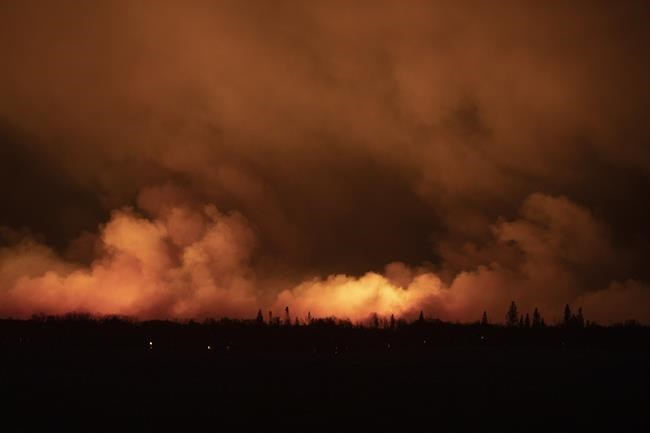VANCOUVER — Wildfire conditions are cause for concern this year as parts of Saskatchewan, Manitoba and British Columbia report either significant drought or record low rainfall between January and April, experts say.
However, the severity of the wildfire season will depend on what kind of weather the next few months bring, they say.
Mike Flannigan, a professor of wildland fire at the University of Alberta, said May is the busiest month for wildfires in Alberta, and June and July for the rest of Canada except for B.C. where it is August.
"It just doesn't depend on June," he said. "It depends on the weather during June, July and August."
The recent trend, Flannigan said, has seen a decrease in the number of fires but an increase in the area burned caused by more lightning strikes.
Lightning-caused fires happen in remote areas, tend to be larger and occur in clusters that may overwhelm fire management authorities, he said.
It takes time to report and reach them, he said, and hot, dry and windy days exacerbate the fires.
"If you don't get to the fire when it's small — by small I mean smaller than a soccer pitch — you have a real problem," Flannigan said.
"The longer it takes you to get to the fire, the more likely the fire is going to escape and get large."
Flannigan said spring is coming earlier across Western Canada and that dries out the vegetation, making it easy for a fire to start and spread.
"It means that the higher intensity, the more challenging or difficult or impossible (it is) to extinguish if it gets bigger than that football field."
Lori Daniels, a forestry professor at the University of British Columbia, said the fire season in B.C. will depend on how much rain falls in June and July.
"So it's really kind of the canary in the coal mine — the weather between now and the end of June."
The record-breaking fire season of 2017 in B.C. saw fairly cool conditions in May and early June but warm and dry weather towards the end of the month, she said.
"The weather channel becomes my favourite channel to watch when trying to predict what's going to happen with our fire seasons because I watch to see where is our high pressure, which gives us sunny, hot conditions," she said.
"It means that there are no clouds forming, we're not going to get rain, and if you get lightning and wind, those combined with those sunny, hot conditions, we're in trouble in terms of fire season."
Western forests also have plenty of flammable material in the combination of living and dead trees.
Flannigan said dead wood caused by mountain pine beetles, spruce budworm or other pests can lead to crown fires, where high-intensity fires in the tree tops cause "massive walls of flames" and are extremely difficult or almost impossible to extinguish.
For now, Flannigan and Daniels say they are in fire-watch mode.
Last year was quiet, while 2019 was busy in Canada. The two previous years were record breakers in B.C., Flannigan said.
"So, you know, it's a roller-coaster," he said.
"I can't tell you what it's going be. I can tell you what's happened by far. We're above average. But what's the rest of the fire season going to look like? I don't know."
This report by The Canadian Press was first published May 22, 2021.
Hina Alam, The Canadian Press



